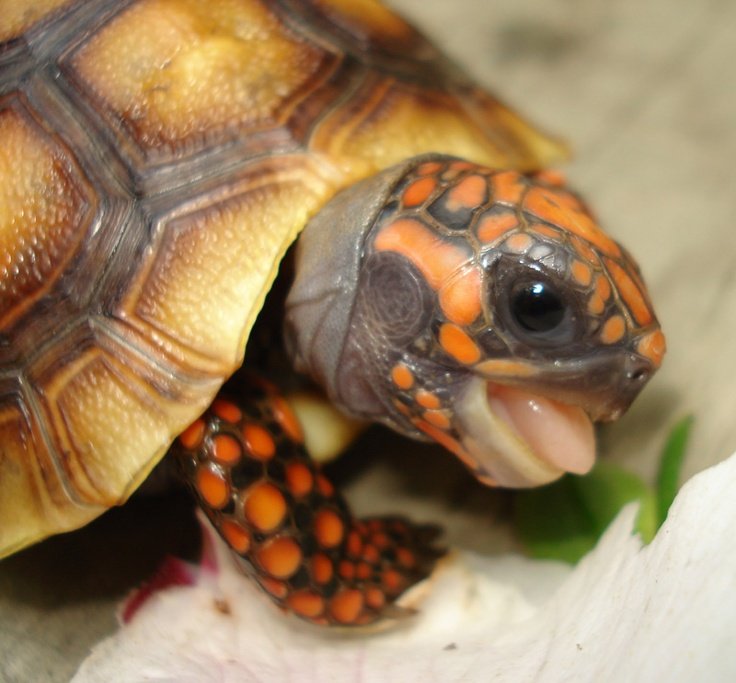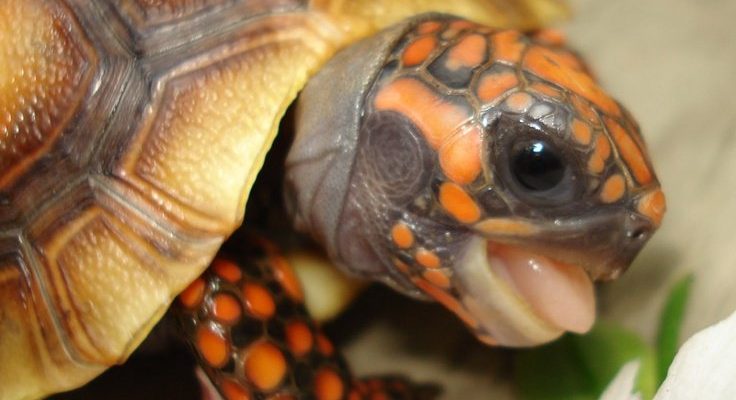
Now, if you’re new to the tortoise world, you might be wondering what it actually means to create this perfect environment. Well, it’s about more than just warmth or a bit of moisture in the air. Red-footed tortoises have unique needs that, when met, can lead to a happy and healthy life. Let’s dive into some essentials you should consider to keep your tortoise thriving.
Understanding the Natural Habitat of the Red-Footed Tortoise
To properly care for a red-footed tortoise, it helps to know where they come from. These tortoises are native to the rainforests and savannas of South America, particularly in countries like Brazil and Venezuela. Imagine the warmth of the sun, the feel of damp soil, and the lush greenery surrounding them. That’s their world!
Temperature is a key factor in their environment. In the wild, the temperature can range from about 70°F to 90°F (21°C to 32°C). They bask in the sun to absorb heat, which is crucial for their digestion and overall health. On the flip side, they need cooler areas where they can retreat from the heat. This natural variation is vital for keeping their internal systems balanced.
Humidity plays a big role too. In their natural habitat, the humidity can reach up to 80%. This moisture is essential for their skin and helps prevent respiratory issues. Without proper humidity, you might find your tortoise getting dehydrated or developing other health problems. So, let’s explore how to replicate these conditions at home!
Creating the Right Temperature Zones
Now that we know the basics, let’s break down how to create those temperature zones in your tortoise’s habitat. You’ll want to establish a basking area and a cool spot.
1. Basking Area: This is where your red-footed tortoise will soak up the sun (or, in this case, the heat from a lamp). Aim for a temperature of about 90°F (32°C) here. You can achieve this by using a heat lamp placed at one end of the enclosure. Make sure it’s secure and positioned well above your tortoise to prevent burns.
2. Cool Spot: On the other end of their enclosure, you’ll want to create a cooler area that stays around 75°F (24°C). This can be done by keeping the heat lamp away from that side. Tortoises will often move between these zones to regulate their temperature, just as they would in the wild.
It’s a good idea to have a reliable thermometer in both areas to monitor the temperature constantly. This way, you can make adjustments as needed.
Monitoring Humidity Levels
So, how do you keep the humidity levels where they need to be? Honestly, this part can feel a bit tricky at first. But with some simple tools, it can be done smoothly.
1. Humidity Gauge: Investing in a good hygrometer will help you keep track of the humidity levels in your tortoise’s enclosure. Aim for around 60% to 80% humidity.
2. Mist the Habitat: Regularly misting the enclosure with water can help maintain the right humidity. You might find that once or twice a day gets the job done, especially if you notice the air feeling dry.
3. Water Dish: Don’t forget to provide a shallow water dish for your tortoise! Not only can they drink from it, but it also helps with humidity. Just be sure to change the water daily and keep it clean.
Seasonal Considerations
As seasons change, so can the temperature and humidity in your home. You might notice your red-footed tortoise becoming less active during colder months. That’s completely normal!
1. Winter Months: During winter, indoor heating can dry out the air. Keep an eye on your hygrometer and adjust your misting routine accordingly. A humidifier in the room can also help.
2. Summer Months: Conversely, summer can bring higher temperatures and humidity. Ensure that your tortoise has access to cooler areas to avoid overheating. Reshuffling the setup might be necessary to keep things just right.
Adapting your care to the seasons is part of being a great tortoise owner. It’s all about paying attention to your pet’s needs as they change.
Common Problems with Temperature and Humidity
Even with the best intentions, sometimes things don’t go as planned. Here are a few common issues you might run into while trying to maintain the right conditions:
– Too Dry: If your tortoise’s skin starts to look flaky or they seem less active, it might be a sign that the humidity’s too low. Misting more or adding a larger water dish can help.
– Too Wet: On the other hand, if you notice mold growing in the enclosure or your tortoise becoming lethargic, it may be too humid. You might need to reduce how often you mist or even improve ventilation.
Keep an eye on your tortoise’s behavior—it’s often the best indicator of how comfortable they are.
Final Tips for a Happy Red-Footed Tortoise
Creating the perfect environment for your red-footed tortoise doesn’t have to be stressful. Here are a few quick tips to keep in mind:
– Regular Checks: Make it a habit to check the temperature and humidity daily. This not only keeps your tortoise healthy but also helps you catch any issues early.
– Natural Decor: Adding plants or coconut fiber can help with both humidity and making the habitat feel more natural. Just be sure any plants are safe for tortoises!
– Observe Behavior: Spend time observing your tortoise. If they’re exploring, basking, or eating well, you’re likely doing a great job.
By focusing on the right temperature and humidity, you’re giving your red-footed tortoise the best chance at a happy, healthy life. It’s all about creating a little slice of their natural habitat right in your home. With some attention and love, your tortoise will thrive!
In conclusion, caring for a red-footed tortoise can be a fulfilling journey when you understand their needs. They might be small, but the joy they bring is immense. Through patience and learning, you’ll develop a rewarding bond with your new friend. Happy tortoise parenting!

